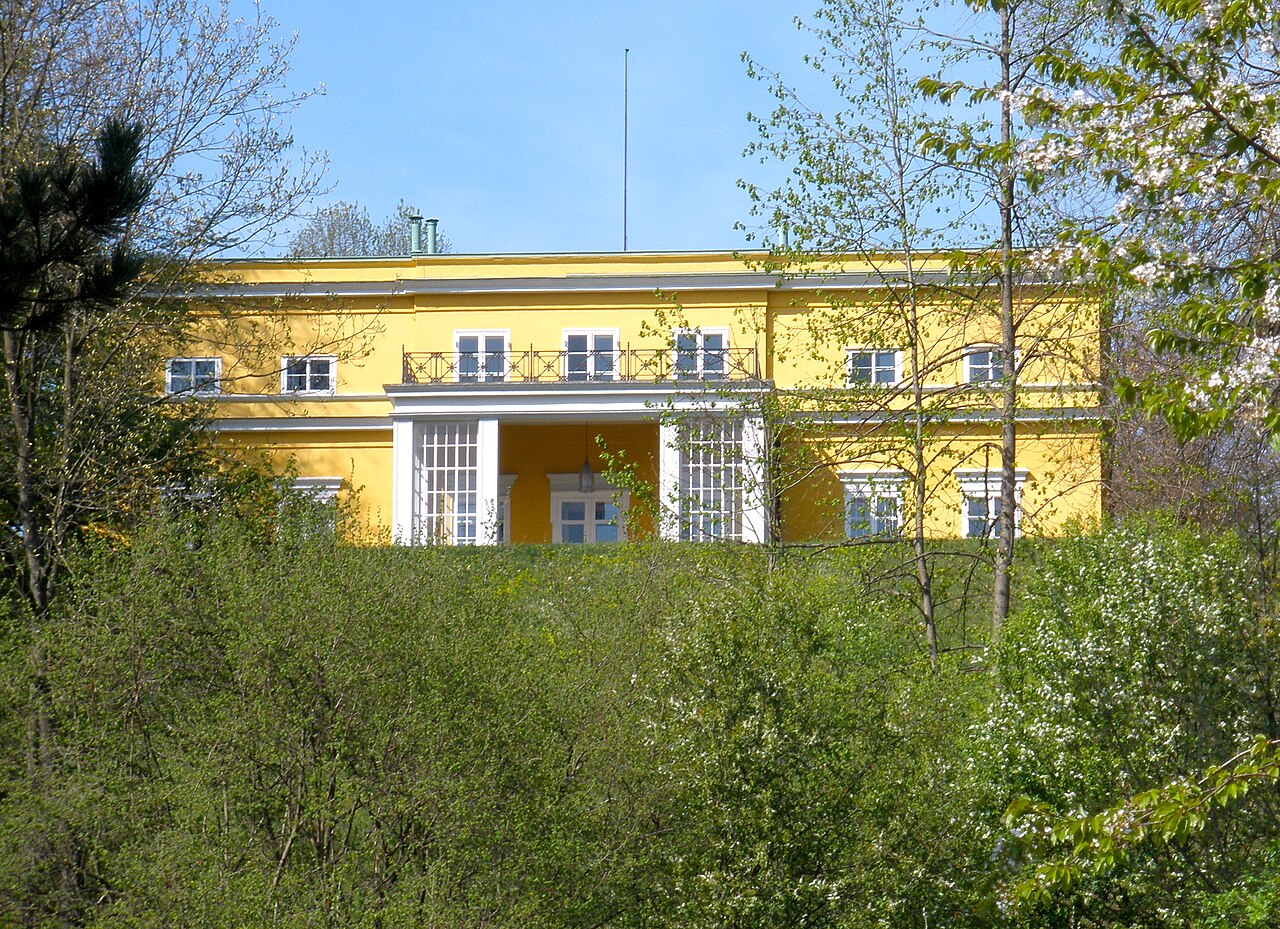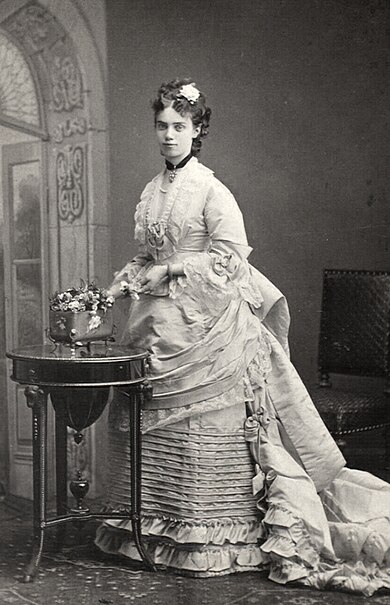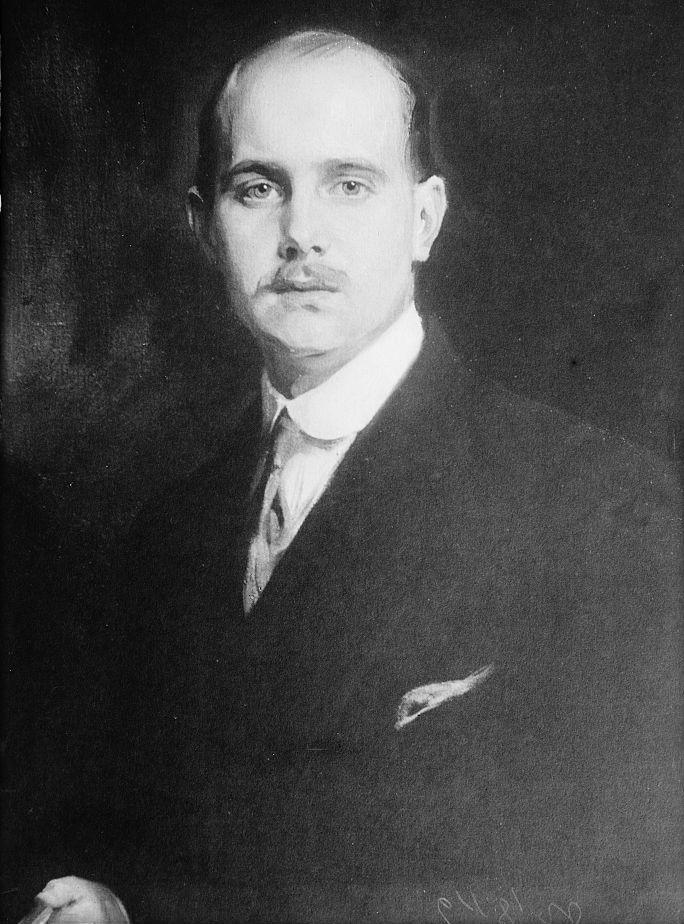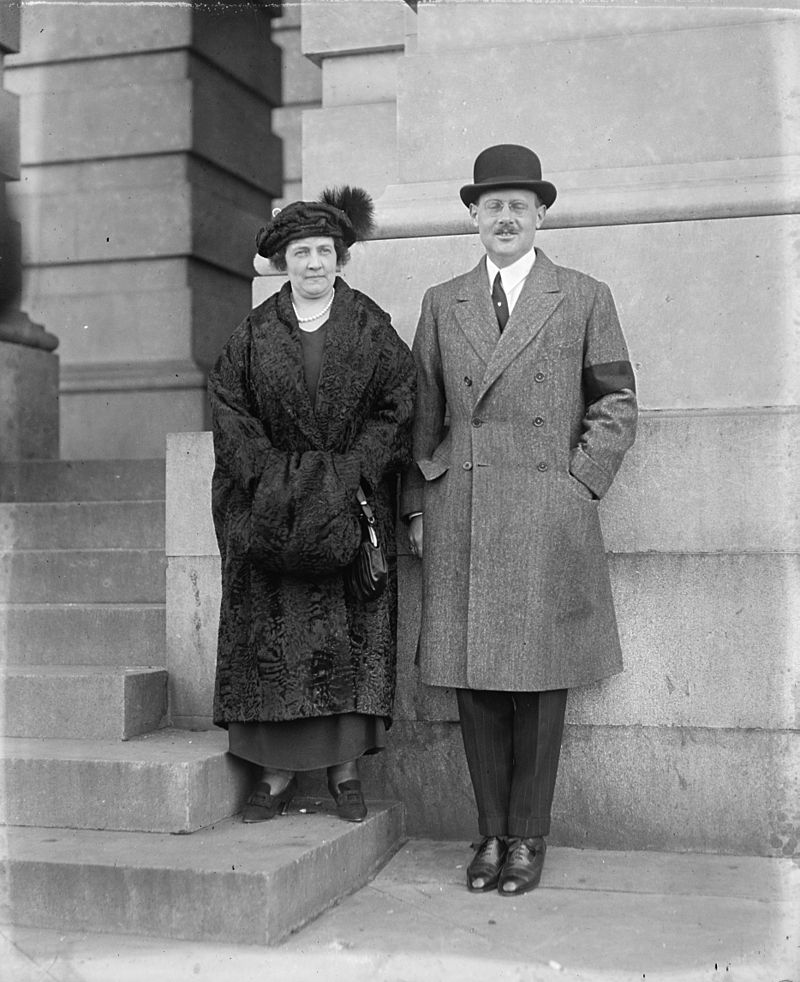by Scott Mehl
© Unofficial Royalty 2019

Ernst August II, Crown Prince of Hanover; Credit – Wikipedia
Ernst August was the last Crown Prince of Hanover, and the last to hold the Dukedoms of Cumberland and Teviotdale in the United Kingdom. He was born Prince Ernst August Wilhelm Adolf Georg Friedrich on September 21, 1845, in Hanover, Kingdom of Hanover, now in Lower Saxony, Germany. He was the only son of King Georg V of Hanover and Princess Marie of Saxe-Altenburg. He had two younger sisters:
- Princess Friederike (1848) – married Alfons, Baron von Pawel-Rammingen, had issue
- Princess Marie (1849) – unmarried

Queen’s Villa in Gmunden. photo: Von Lars Staffanski – Own work, CC BY-SA 3.0, https://commons.wikimedia.org/w/index.php?curid=32046268
Ernst August became Crown Prince upon his father’s accession in November 1851. However, in 1866, Hanover was annexed by the Kingdom of Prussia after siding against Prussia in the Austro-Prussian War. Two years later, Ernst August’s parents moved their family to Gmunden, Austria. They took up residence at Villa Redtenbacher, which they later purchased. It would be his parents’ home until his father died in 1878, and later became known as the Queen’s Villa, as Queen Marie remained there until she died in 1907.

Princess Thyra of Denmark, c1871. source: Wikipedia
On December 21, 1878, Ernst August married Princess Thyra of Denmark at Christiansborg Palace in Copenhagen. She was the daughter of King Christian IX of Denmark and Princess Luise of Hesse-Kassel. The couple first met while Ernst August was visiting his second cousin, The Prince of Wales (later King Edward VII of the United Kingdom) at Sandringham in Norfolk, England in 1875. Princess Thyra was the sister of Edward’s wife Alexandra. Ernst August and Thyra had six children:
- Princess Marie Luise (1879) – married Prince Maximilian of Baden, had issue
- Prince Georg Wilhelm (1880) – unmarried
- Princess Alexandra (1882) – married Friedrich Franz IV, Grand Duke of Mecklenburg-Schwerin, had issue
- Princess Olga (1884) – unmarried
- Prince Christian (1885) – unmarried
- Ernst August III, Duke of Brunswick (1887) – married Princess Viktoria Luise of Prussia, had issue

Ernst August with his wife and children, 1888. source: Wikipedia
Upon his father’s death in June 1878, Ernst August inherited his titles, becoming the 3rd Duke of Cumberland and Teviotdale and Earl of Armagh in the United Kingdom, and head of the House of Hanover. He was also made a Knight of the Order of the Garter by Queen Victoria of the United Kingdom, his father’s first cousin. Like his father, he continued to claim his right to the Hanoverian throne, which caused friction with Prussia. This was such a big issue that when he became the rightful successor to the Duchy of Brunswick upon the death of his cousin Wilhelm, Duke of Brunswick, the Kingdom of Prussia refused to allow him to ascend the ducal throne. Instead, they appointed Prince Albrecht of Prussia to serve as Regent for the duchy.
After succeeding his father, Ernst August purchased a large amount of land near the Villa, and in 1882, began construction on a new castle in Gmunden, Austria. Completed four years later, he named it Schloss Cumberland (link in German), in honor of his British title. Schloss Cumberland would become Ernst August’s primary residence for the rest of his life.
Reconciliation with Prussia finally came in 1913. Ernst August’s son, also named Ernst August, became engaged to Princess Viktoria Luise of Prussia, the only daughter of the German Emperor. In the days leading up to the wedding, Ernst August renounced his rights to the Duchy of Brunswick in favor of his son, who took his place as Duke of Brunswick.
World War I saw the end of what had always been a close relationship with his British relatives. He was removed from the roll of the Order of the Garter in 1915, and in 1917 was stripped of his title of Prince of the United Kingdom. Lastly, as a result of the Titles Deprivation Act, in 1919 he was stripped of his British peerages for “bearing arms against Great Britain.” The titles – Duke of Cumberland and Teviotdale – remain in abeyance, and his direct descendants could petition to have them restored. To date, no such petition has been made.

Schloss Cumberland. photo: Stague49 – Own work, CC BY-SA 4.0, https://commons.wikimedia.org/w/index.php?curid=67974426
The former Crown Prince spent his remaining years at Schloss Cumberland in Gmunden, Austria where he died on November 14, 1923, after suffering a stroke. He is buried in the mausoleum at the Schloss, alongside his wife and mother.
This article is the intellectual property of Unofficial Royalty and is NOT TO BE COPIED, EDITED, OR POSTED IN ANY FORM ON ANOTHER WEBSITE under any circumstances. It is permissible to use a link that directs to Unofficial Royalty.

























